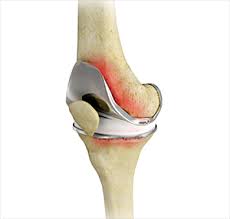Orthopedic specialists employ a variety of methods to diagnose orthopedic conditions and injuries, aiming to accurately identify the underlying issue and develop an appropriate treatment plan. Here’s an overview of the diagnostic process typically used by orthopedic specialists:
1. Patient History:
- The diagnostic process often begins with a thorough review of the patient’s medical history. This includes details about the onset of symptoms, previous injuries or surgeries, underlying medical conditions, and family history of musculoskeletal problems. Understanding these factors helps the specialist focus on relevant areas during the physical examination and subsequent diagnostic tests.
2. Physical Examination:
- A comprehensive physical examination is conducted to assess the affected area(s). The orthopedic specialist examines the range of motion, strength, stability, and overall function of the joints, muscles, ligaments, and tendons. Specific tests and maneuvers may be performed to reproduce symptoms or identify areas of tenderness, instability, or weakness.
3. Imaging Studies:
- Imaging plays a crucial role in diagnosing orthopedic conditions. Common imaging modalities include:
- X-rays: Provide detailed images of bones to assess fractures, joint alignment, arthritis, and bone density.
- CT scan (Computed Tomography): Offers detailed cross-sectional images that help evaluate complex fractures, joint anatomy, and bone density.
- MRI (Magnetic Resonance Imaging): Produces high-resolution images of soft tissues, such as muscles, tendons, ligaments, and cartilage, useful for diagnosing injuries like ligament tears, tendonitis, and cartilage damage.
- Ultrasound: Uses sound waves to create images of soft tissues and can assist in diagnosing tendon and muscle injuries.
4. Laboratory Tests:
- Blood tests may be ordered to assess inflammatory markers, infection, or metabolic conditions that could be contributing to musculoskeletal symptoms. For example, blood tests can help diagnose conditions like rheumatoid arthritis or gout.
5. Diagnostic Injections:
- In some cases, diagnostic injections may be used to confirm a suspected diagnosis or pinpoint the source of pain. For instance, joint injections with local anesthetics or corticosteroids can help determine if a specific joint or structure is causing symptoms.
6. Functional Assessments:
- Functional assessments may involve specialized tests or measurements to evaluate how well the affected area functions. This can include assessing gait (walking pattern), balance, proprioception (awareness of joint position), and muscle strength.
7. Specialized Tests:
- Depending on the suspected condition, additional specialized tests may be performed. Examples include nerve conduction studies and electromyography (EMG) to evaluate nerve function, bone scans to detect bone abnormalities like stress fractures or tumors, and arthroscopy (minimally invasive surgery with a small camera) for direct visualization of joint structures.
8. Consultation and Collaboration:
- Orthopedic specialists often collaborate with other healthcare professionals, such as radiologists, physical therapists, and rheumatologists, to obtain comprehensive insights into the patient’s condition. This multidisciplinary approach ensures a thorough evaluation and comprehensive treatment plan tailored to the patient’s needs.
In conclusion, the diagnosis of orthopedic conditions and injuries involves a systematic approach combining patient history, physical examination, imaging studies, laboratory tests, and sometimes specialized procedures. This comprehensive evaluation enables orthopedic specialists to accurately diagnose musculoskeletal problems and recommend appropriate treatment strategies to improve patient outcomes and quality of life.






Comments